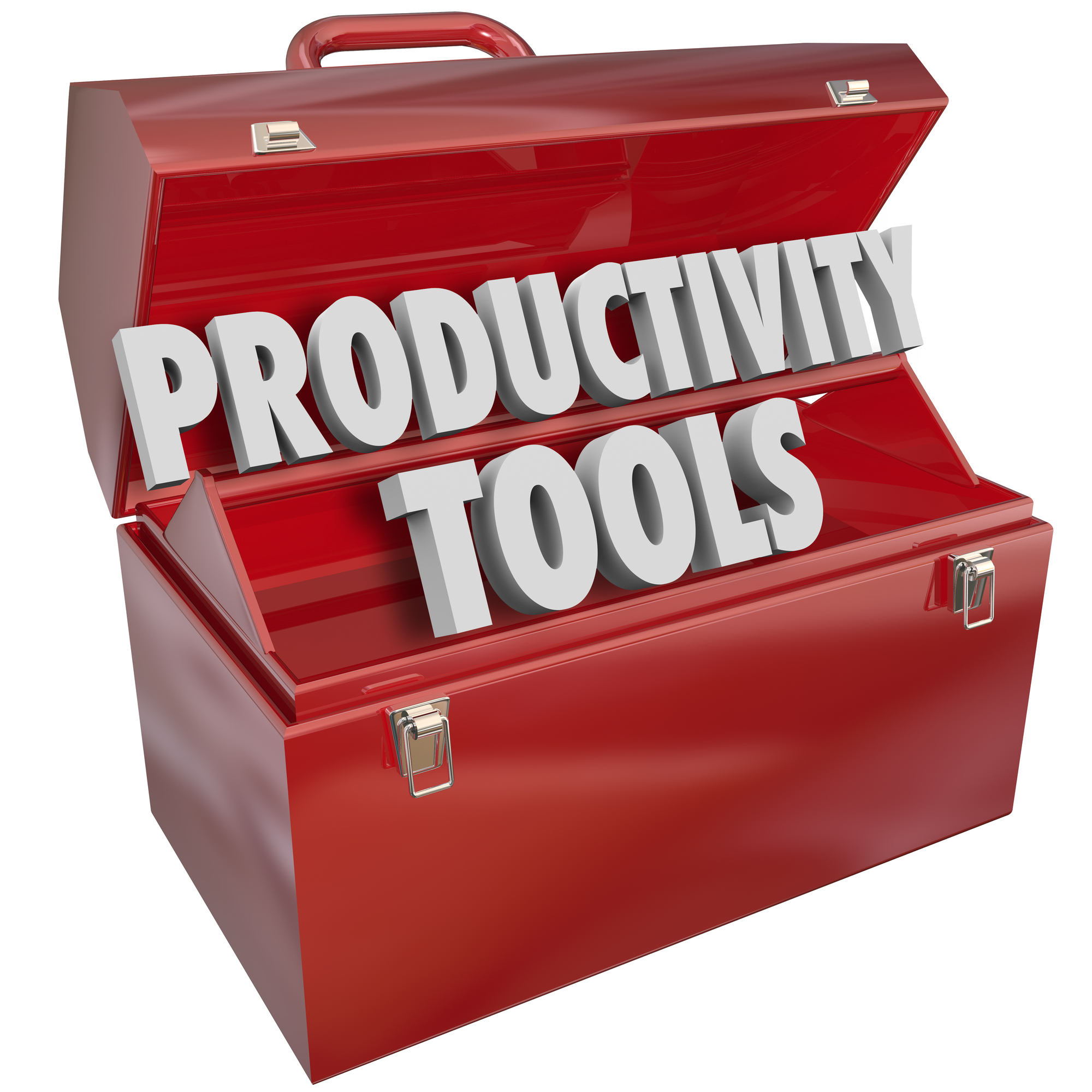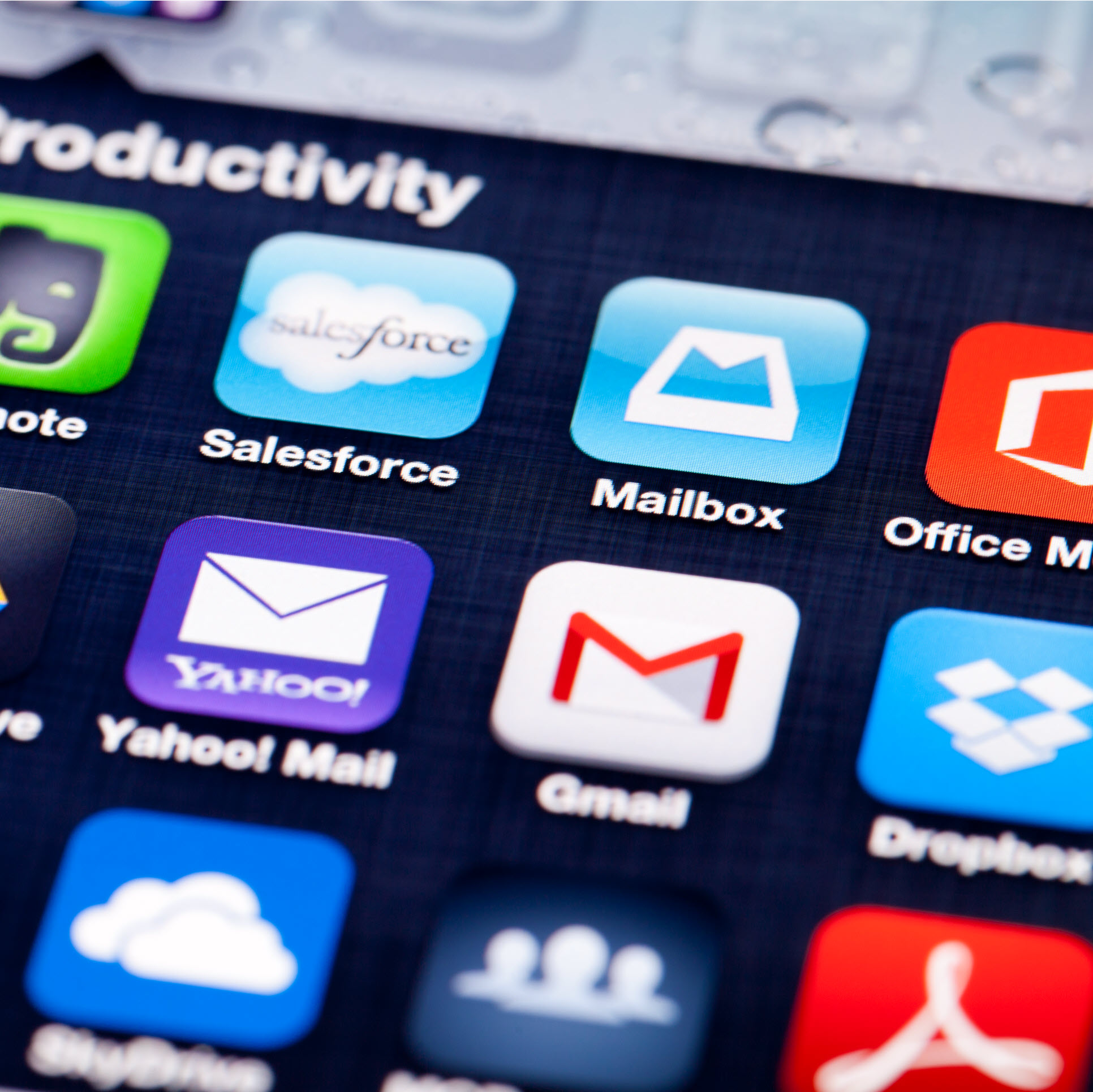Typically these are apps you’ll be using all day, every day.
So, a good question is: how can I become more productive and organised when working with these apps?
The first thing to note is that these apps are often related. For example, you may receive an email that causes you to do one or more of the following: create a task, a calendar entry, or a note. So, it will save you time if these apps all integrate well together.
Switching between apps can take deliberate effort and may result in you forgetting to complete some vital tasks. For example, you may add tasks in an app then forget to regularly visit that app to see what you need to do.
In general, it pays to be deliberate about simplifying your online life. For example, you could use an app such as Active Inbox to integrate your tasks and your email into the same app. That way, your tasks are visible while doing your emails, and it is easy to create a task from an email. Also, you don’t have to switch between apps continually.
First, let’s consider your Calendar.
When it comes to your email and calendar apps, it’s good to go with a major supplier who continually updates their products. For example, Google or Microsoft. We use Google and are therefore more able to provide hints and tips for the Google platform.
Another advantage of going with Google or Microsoft is that many third-party suppliers have an incentive to provide useful add-ons that integrate well with Google and Microsoft.
The first life-changing enhancement we recommend you add to your Calendar is the ability to send a link allowing others to book a time in your Calendar. Initially, this may sound terrible because you feel you don’t want others to control your time. However, you soon discover that you are in control. As a result, you save a lot of time for yourself and others and significantly reduce your stress levels.
Typically, you will have many entries on your diary and attempting to book time for another meeting often becomes a time-wasting mission. For example, you suggest a meeting time only to find that the other person is not available at that time. They then propose an alternative time that does not suit you. And so on. Having the ability to send a link for the other person to book a free time slot in your Calendar that suits them means that it’s immediately done. The booking will automatically appear in your Calendar, and you will also receive a notification by email.
Using a booking system has many additional advantages such as:
You can block time out for other activities.
You can place a buffer around meetings in your diary. For example, you can specify that others can’t book in for 15 minutes before or after an event in your Calendar.
You can provide a variety of event times of differing durations. For example, 15 mins, 30 mins, 45 mins and so on. In addition, you can send some people the ability to book in only for a specific time duration.
The system can link with apps such as Zoom to automatically create a Zoom link for the meeting.
You can request additional information such as their mobile phone number & anything they consider could be relevant for the meeting.
You can provide more information about you to the person making the booking in the booking form they fill out.
You can set the system up to send them an email confirmation and reminder emails, and SMS.
Various apps provide the above functionality. We use the Calendly app and suggest that this app is an excellent place to start. There is a free version of Calendly, and the paid version is relatively inexpensive and of good value.
If you use your calendar app to contain your tasks and appointments, you may find looking at an utterly crowded calendar overwhelming. Instead, consider separating your tasks and projects from your Calendar.
Next, let’s consider the app you use to manage your emails.
In general, we receive a massive amount of emails from multiple sources.
Everyone has different ways of dealing with this.
You need to find a way that works for you without anything “falling between the cracks”.
Gmail and Outlook both have many features that will enable you to deal with a large volume of emails.
Here are some things to consider that could help you:
Use filters to deal with many emails automatically.
Take the time to set up your inbox in a way that suits your workflow. Then, learn about the basic features of the email app you are using.
Many emails will trigger tasks, projects or notes. Many apps integrate with your email to make this easy. For example, you can forward an email to Evernote. You can then move the note created in Evernote to a notebook or give it a tag.
You can integrate apps such as TODOist or ActiveInbox with your email. Such apps work well. However, be aware that switching between apps can drain your energy.
Become more proactive than reactive and reduce context-switching.
Many tasks and projects work best when you allocate blocks of time to them. This means that you need only to check your emails at the intervals you pre-determine. You should also consider reducing the number of notifications you allow to interrupt the time you block out for other tasks.
How do you currently manage your Todo’s?
Do you feel your task management could be better?
Different types of tasks with varying levels of importance or urgency will continually arise from varying sources.
For example, you may receive an email from a colleague containing a link to a TED talk that they believe will be useful for you.
You may receive another email informing you that the software system you are responsible for has a critical issue.
You may be on a Zoom call when someone says something that reminds you of how you may be able to advocate for someone in the CC.
Or you may have a “light bulb moment” while you are in the shower for one of the projects you are working on.
How do you quickly capture all these tasks, ideas, projects and content?
How do you categorise and prioritise them?
Especially as new tasks and to-dos continually arise?
It is great to have a comprehensive task management system that integrates with your email system, such as todoist.
On the other hand, you don’t want to spend your life constantly putting things into a task management system and swapping between apps. This can be overwhelming. It can also be demotivating if you feel you are putting more tasks into your system than you are crossing off.
A tool and a systematic way of managing tasks can help you a great deal.
Here are some tips that may help you:
Look at apps such as the Todoist and ActiveInbox for Gmail.
Consider using Evernote to store content that could be useful in the future but does not warrant creating a task right now.
Create some rules for yourself around the time you will allocate to different types of tasks and projects.
How do you currently take notes?
Many of us are used to taking notes with pen and paper.
And we like it.
However, taking notes on paper has some obvious drawbacks.
For example, you have to scan through the notes you have written to find the information you are after. This can be time-consuming. It can also be disjointed when you have taken several notes on the same topic at different times. You are also likely to become distracted by other notes searching for the one you are after.
Many people have a 2 stage process.
First, they take notes with pen and paper.
Then at the end of the day, they examine all the notes they have taken and record them in an app such as Evernote or Todoist.
If this is you, consider cutting out the pen and paper note-taking step by typing straight into an app such as Evernote. Evernote makes this easy by providing a scratchpad for you to take quick notes. Evernote can also integrate with your Calendar, making it easy to click a meeting link that creates a note containing the date, meeting topic, a section to record notes, and a section to record required action steps.
It is easy to take notes in Evernote during a Zoom meeting - especially if you have dual monitors or one large monitor.
Change is usually not easy. Especially when you have to set up a new app, get used to it and form a new habit. However, it’s worth scheduling the time to make gradual changes when there are significant benefits such as time-saving, reduced stress, greater efficiency and effectiveness.

Overview of tools & Tips + Your Questions This is the final workshop before you go into the leadership and personal development series. Although...

Other great apps In addition to the primary calendar, email, task and note-taking apps and their associated add-ons, other apps can help you save...

Consider investing in better computer equipment. If you already have a fast computer with multiple screens, you probably can’t imagine how you ever lived...